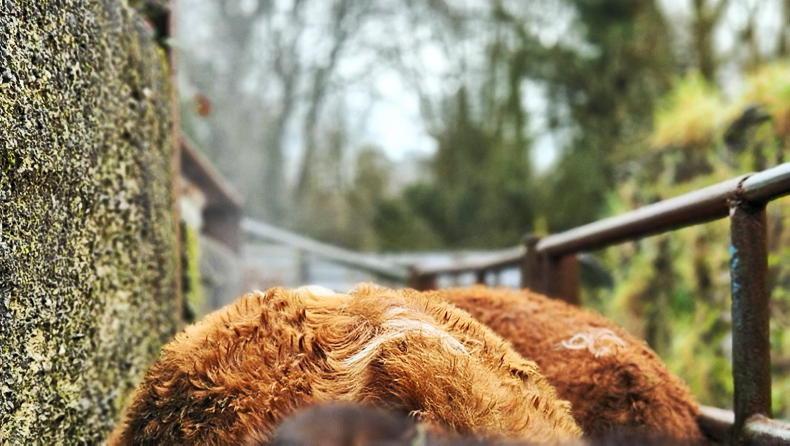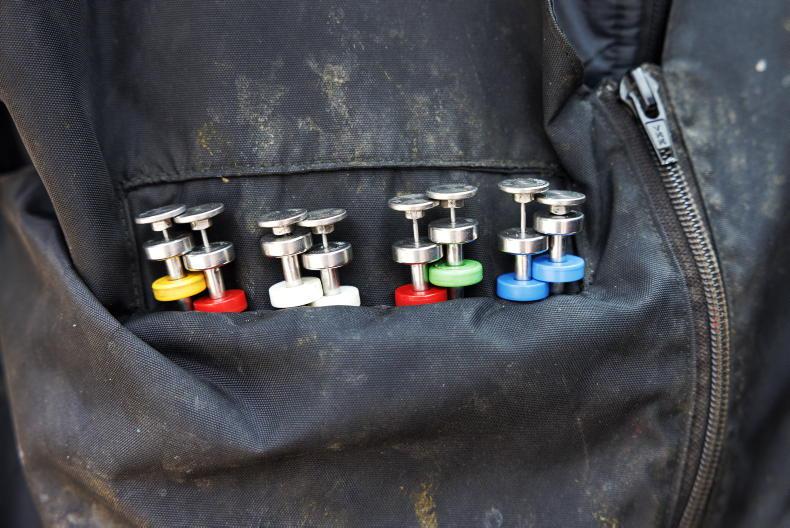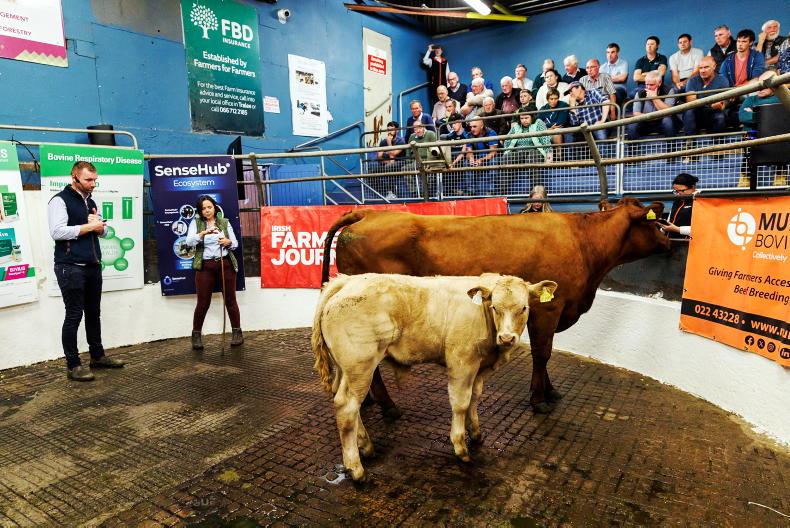It is mid-April, which means suckler farmers calving from February to April will be turning stock bulls out to cows in four to six weeks’ time.
The stock bull will have been a lower-priority animal on farms operating spring-calving systems over the winter housing period.
But they should start getting more attention from now until breeding starts. Outlined are five tips to get stock bulls ready for breeding.
1. Building body condition
Bulls can lose flesh during breeding, so it is good practice to build body condition before turning stock sires out to cows.
Target a body condition score (BCS) of 3.5 to 4 going out to cows. That may mean offering bulls 3kg to 6kg/day of concentrate to gain flesh, depending on current BCS, silage quality and availability.
Changing from BCS 3 to BCS 4 is basically a 10% gain in liveweight. So for an 800kg bull, this would be a gain of 80kg in liveweight.
Where a new stock bull arrives on farm before breeding, check with the breeder about what the bull was eating. Gradually wean off that diet and build up forage intakes ahead of turnout.
2. Foot trimming
Check the bull’s feet. If hooves are overgrown, now is the time for trimming to allow feet to harden up again before breeding starts.
Trimming just as breeding starts can leave the bull with tender feet, hindering mobility and potentially cause fertility issues.
If stock bulls lay on straw bedding over winter, provide access to a clean, hard standing area. Again, this will harden feet.
3. Check testicles and penis
Secure the bull in a headlocking gate, then check both testicles and the penis for abnormal lumps, swelling, hardness and warts. Ask the vet to carry out checks if you are not confident on this task.
Both testicles should be symmetrical, have a firm feel similar to a flexed bicep and hang freely. Tight, wedged-shaped testicles can struggle to regulate semen temperature, so fertility can be affected.
Measure the circumference of the testicles. A stock bull over 24 months old should have testicles with a minimum circumference of 34cm.
4. Allow the bull to exercise
A stock bull’s mobility can be hindered from housing in small pens over winter. It also reduces muscle tone in the hind legs, which support the weight of a bull when mounting cows.
If possible - and safe to do so - can bulls get access to handling pens in the fortnight before breeding starts? This will increase exercise and prove beneficial.
Alternatively, once cows go out to grass, can stock bulls be moved to larger group pens as they emptied to increase exercise?
5. Breeding vaccines
Ensure all routine health treatments and breeding vaccines are up to date. Where a new stock bull has come on farm, include the animal in any vaccination programme.
Read more
Skipping grazing silage ground and splitting fertiliser applications
Beef management: Delayed turnout leads to housing issues
It is mid-April, which means suckler farmers calving from February to April will be turning stock bulls out to cows in four to six weeks’ time.
The stock bull will have been a lower-priority animal on farms operating spring-calving systems over the winter housing period.
But they should start getting more attention from now until breeding starts. Outlined are five tips to get stock bulls ready for breeding.
1. Building body condition
Bulls can lose flesh during breeding, so it is good practice to build body condition before turning stock sires out to cows.
Target a body condition score (BCS) of 3.5 to 4 going out to cows. That may mean offering bulls 3kg to 6kg/day of concentrate to gain flesh, depending on current BCS, silage quality and availability.
Changing from BCS 3 to BCS 4 is basically a 10% gain in liveweight. So for an 800kg bull, this would be a gain of 80kg in liveweight.
Where a new stock bull arrives on farm before breeding, check with the breeder about what the bull was eating. Gradually wean off that diet and build up forage intakes ahead of turnout.
2. Foot trimming
Check the bull’s feet. If hooves are overgrown, now is the time for trimming to allow feet to harden up again before breeding starts.
Trimming just as breeding starts can leave the bull with tender feet, hindering mobility and potentially cause fertility issues.
If stock bulls lay on straw bedding over winter, provide access to a clean, hard standing area. Again, this will harden feet.
3. Check testicles and penis
Secure the bull in a headlocking gate, then check both testicles and the penis for abnormal lumps, swelling, hardness and warts. Ask the vet to carry out checks if you are not confident on this task.
Both testicles should be symmetrical, have a firm feel similar to a flexed bicep and hang freely. Tight, wedged-shaped testicles can struggle to regulate semen temperature, so fertility can be affected.
Measure the circumference of the testicles. A stock bull over 24 months old should have testicles with a minimum circumference of 34cm.
4. Allow the bull to exercise
A stock bull’s mobility can be hindered from housing in small pens over winter. It also reduces muscle tone in the hind legs, which support the weight of a bull when mounting cows.
If possible - and safe to do so - can bulls get access to handling pens in the fortnight before breeding starts? This will increase exercise and prove beneficial.
Alternatively, once cows go out to grass, can stock bulls be moved to larger group pens as they emptied to increase exercise?
5. Breeding vaccines
Ensure all routine health treatments and breeding vaccines are up to date. Where a new stock bull has come on farm, include the animal in any vaccination programme.
Read more
Skipping grazing silage ground and splitting fertiliser applications
Beef management: Delayed turnout leads to housing issues










SHARING OPTIONS